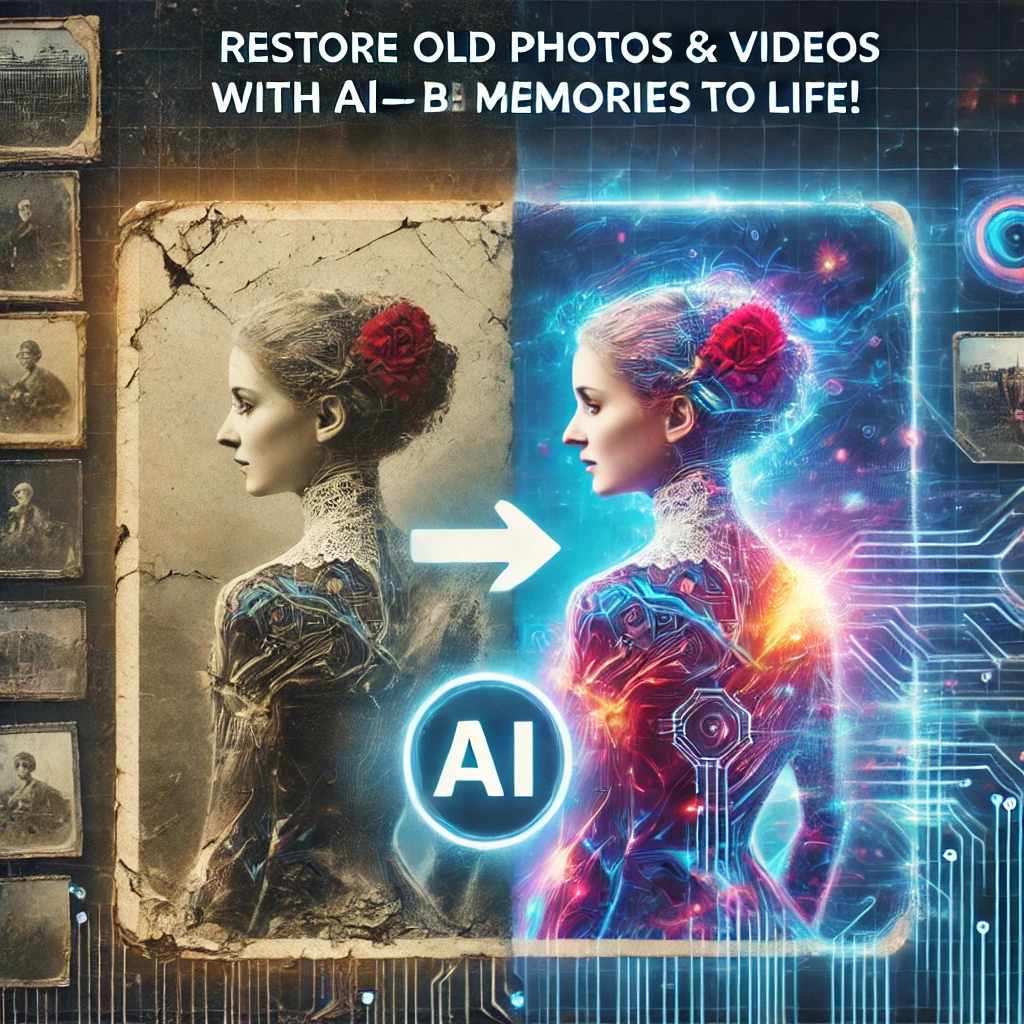Introduction
The advancement of Artificial Intelligence (AI) has revolutionized how we restore old photos and videos. AI-based restoration techniques help recover faded, scratched, and low-resolution media, bringing them back to life with enhanced clarity and detail. Whether you want to restore cherished family photos, historical archives, or vintage videos, AI provides a seamless solution. This article explores the restoration process, registration methods, best AI prompts for image-to-video conversion, and ways to enhance video quality.
How AI Restores Old Photos and Videos
AI restoration techniques involve multiple processes such as image upscaling, noise reduction, colorization, and frame interpolation. These processes work together to improve the quality of old and damaged media. AI models trained on vast datasets analyze and predict missing details, making restorations more accurate and realistic.
Some of the key AI technologies used in restoration include:
- Super-Resolution AI – Enhances image and video resolution without losing details.
- Deep Learning-based Denoising – Removes graininess and noise from old photos and videos.
- Colorization Models – Adds color to black-and-white images and videos using deep learning algorithms.
- Frame Interpolation AI – Generates new frames in videos to create smoother motion.
Registration Process for AI Restoration Tools
Many AI-powered platforms offer photo and video restoration services. Here is a general step-by-step guide to registering and using them:
Step 1: Choose an AI Restoration Tool
Some popular AI restoration tools include:
- Remini (for mobile-based restoration)
- DeepAI (for online AI-driven enhancements)
- Topaz Video Enhance AI (for professional video restoration)
- MyHeritage Deep Nostalgia (for animating old photos)
Step 2: Create an Account
- Visit the official website or download the app.
- Click on “Sign Up” or “Create an Account.”
- Provide your email and create a password.
- Verify your account through an email link.
Step 3: Upload Your Old Photo or Video
- Choose the file you want to restore.
- Select restoration options (e.g., colorization, upscaling, denoising).
- Click “Process” and wait for AI to enhance your media.
Step 4: Download the Enhanced File
- Preview the restored version.
- Save it in your preferred format (JPEG, PNG, MP4, etc.).
- If needed, make further adjustments with manual editing tools.
Best AI Prompts for Image-to-Video Conversion
When converting images to videos, prompts play a crucial role in directing AI models to achieve the desired results. Below are some effective AI prompts for generating high-quality image-to-video outputs:
1. Image to Video Prompt for Family Photos:
"Convert this vintage family photo into a high-resolution, smoothly animated video with natural expressions and soft motion." 2. Best Prompt for Historical Image to Video:
"Transform this black-and-white historical photo into a colored, high-definition video with subtle movements, keeping original details intact." 3. Image to Video AI Prompt for Portraits:
"Generate a cinematic animation from this portrait, making the eyes blink and slight head movements for a natural feel." Using these prompts ensures AI accurately understands the requirements and creates realistic, high-quality videos.
How to Enhance Video Quality with AI
Once your old videos are restored, additional improvements can further refine their clarity. Below are some AI-driven techniques to enhance video quality:
1. Upscaling Resolution
AI-powered tools like Topaz Video Enhance AI or ESRGAN increase video resolution from low to high definition (e.g., SD to 4K).
2. Frame Interpolation for Smoother Motion
Using AI-based interpolation, missing frames are generated to make movements fluid. Tools like Flowframes and DAIN-App are excellent for this purpose.
3. Noise Reduction and Deblurring
AI-based denoising models remove unwanted grain and enhance sharpness for a clearer view. Neat Video is one such tool used by professionals.
4. AI-Based Color Grading
To refine colors and contrast, AI tools like Adobe Premiere Pro’s AI Auto Color or DaVinci Resolve AI Color Grading help balance tones.
Recent Updates in AI Photo and Video Restoration
AI-driven restoration is evolving rapidly. Here are some recent advancements:
- Real-Time AI Restoration – Tools now process images and videos in seconds with cloud-based AI.
- Enhanced Deepfake-Free Animation – AI now generates natural facial expressions without deepfake artifacts.
- Improved AI Upscaling – New algorithms produce sharper results without unnatural artifacts.
- AI-Generated Sound Matching – AI can now add realistic sound to restored silent videos.
Conclusion
Restoring old photos and videos with AI has become more accessible and efficient, preserving precious memories and historical content. By leveraging AI tools and using the best prompts, users can achieve stunning restoration results. As AI technology continues to improve, the future of digital media restoration looks more promising than ever.
If you’re looking to restore old photos or enhance vintage videos, explore AI-powered solutions today and bring the past back to life!












1 thought on “Restore Old Photos & Videos with AI: Enhance, Colorize & Bring Memories to Life!”